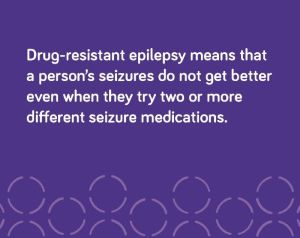Did you know that what you eat can help your brain? For some people with epilepsy, a condition that causes seizures, medications don’t always work to control the seizures. But there is a special way of eating called the ketogenic diet that can help some people, whose seizures are not fully controlled, to have fewer seizures. This diet has been around for a long time and has a fascinating history. In this blog, you’ll learn how the ketogenic diet started, how it works, and why it’s important for people with epilepsy.
Ancient Beginnings: Fasting and Seizure Control
A long time ago, doctors wanted to help people with epilepsy. They noticed that when people didn’t eat for a while, also known as fasting, their seizures got better.
- 1911: the first modern scientific study into fasting as a cure for epilepsy was conducted in France. Patients followed a low-calorie, vegetarian food plan combined with fasting, showing significant improvements.1
- 1915: Dr. John Howland at Johns Hopkins University began studying the link between fasting and epilepsy.2
Since fasting is not a long-term solution, doctors and scientists continued their research into how and why the body reacts when people don’t eat.
The Birth of the Ketogenic diet
In the early 1920s, a doctor by the name of Russell Wilder from the Mayo Clinic developed a special way of eating called “ketogenic diet.” This diet tricks the body into thinking it’s fasting by giving it lots of fat and very little carbohydrates. When people eat this way, their bodies start to produce ketones. Ketones are then used instead of carbohydrates to provide energy for the brain, a process which also occurs during fasting. These ketones might be the explanation of why the ketogenic diet helps to reduce seizures in many patients.
Early Success in the 1920s and 1930s
Early research showed success in seizure control with the ketogenic diet.
- In 1925, a study was published in the Journal of the American Medical Association showing a significant seizure improvement in over 50% of patients following the ketogenic diet.
- In 1936, Dr. Samuel Livingston and Dr. Lydia Pauli at Johns Hopkins Hospital began treating thousands of children with epilepsy using the ketogenic diet. Their work led to significant improvements in seizure control.2
In addition to research and publications on epilepsy and the ketogenic diet, new anti-seizure medications (ASMs) were also in development. With the introduction of ASMs in the 1930’s, the interest in the ketogenic diet declined.
Rediscovery in the Mid-20th Century
1971: Dr. Peter Huttenlocher devised a modified ketogenic diet using medium-chain triglyceride (MCT) oil, allowing more protein and carbohydrates compared to the original diet.1
1972: Dr. John Freeman founded the Johns Hopkins Pediatric Ketogenic Diet Center, revitalizing research and clinical use of the ketogenic diet for epilepsy after it had been overshadowed by anti-seizure medications.2
A Family’s Journey: Sparking Hope for Families Everywhere
Imagine being a parent whose child has epilepsy, is having multiple seizures a day, and nothing seems to be helping. The Abraham family had a similar story to share. Charlie was a young boy who tried many medications to help his seizures, but unfortunately his seizures wouldn’t stop. After searching for another option, Charlie’s family learned about the ketogenic diet. With the help of the amazing doctors and dietitians at Johns Hopkins Hospital, Charlie started the diet and his seizures got much better!
In 1994, Charlie’s dad, Jim Abrahams, started the Charlie Foundation with a mission to help other families learn about the ketogenic diet.

Thanks to Charlie’s story and the foundation, many parents now know about the ketogenic diet as another option to manage drug-resistant epilepsy (DRE) and can find a community of support.
Today the ketogenic diet is offered at nearly all leading children’s epilepsy centers in the United States and in medical centers worldwide.
Modern Developments
In the last 25 years, the ketogenic diet has become much more popular and accepted as a way to help people with epilepsy, especially when ASMs don’t work.3 Scientists and doctors have learned a lot about how the diet works and have found ways to modify the ketogenic diet to help make it easier for families to follow. Some of these new variations include the modified Atkins diet and the low glycemic index treatment.3 These diets allow for a little more flexibility while still helping to reduce seizures.
 In 2001, KetoCal® became the first nutritionally complete ketogenic diet formula designed to help children with drug-resistant epilepsy manage seizures through dietary therapy. KetoCal products help make getting the right balance of fat, protein and carbohydrates simple and easy to prepare.
In 2001, KetoCal® became the first nutritionally complete ketogenic diet formula designed to help children with drug-resistant epilepsy manage seizures through dietary therapy. KetoCal products help make getting the right balance of fat, protein and carbohydrates simple and easy to prepare.
Learn more how KetoCal helps and ways to use KetoCal to help make the ketogenic diet easier.

 Today, the ketogenic diet is used in hospitals and clinics all over the world. There are even groups, like the International Neurological Ketogenic Society (INKS), that bring together doctors, dietitians, and families to share the latest research and support each other. Thanks to all these new developments, more people with epilepsy have hope for better seizure control and a better life.
Today, the ketogenic diet is used in hospitals and clinics all over the world. There are even groups, like the International Neurological Ketogenic Society (INKS), that bring together doctors, dietitians, and families to share the latest research and support each other. Thanks to all these new developments, more people with epilepsy have hope for better seizure control and a better life.
Key Takeaways
- The ketogenic diet is an important option for people with epilepsy, especially when medications don’t work.
- The link between diet and epilepsy started long ago when doctors noticed that fasting could help control seizures.
- In the 1920s, doctors created the ketogenic diet to mimic the effects of fasting by using foods high in fat and low in carbohydrates.
- Over the years, the diet helped many children and adults, but it became less popular when new seizure medicines were invented.
- Families like the Abrahams, whose son Charlie found seizure reduction with the diet, helped bring the ketogenic diet back into the spotlight.
- New diet variations & products, like KetoCal can help make the ketogenic diet easier for families to follow.
- Ongoing research and support from organizations continue to give hope to people with epilepsy and their families.
References: 1. News-Medical.net 2. Johns Hopkins Medicine 3. ILAE
Brought to you by Nutricia North America
Always consult with your ketogenic clinician prior to making any changes to your ketogenic diet or condition management.
KetoCal® is a medical food for the dietary management of drug-resistant epilepsy and must be used under medical supervision.
©Nutricia North America 2025

